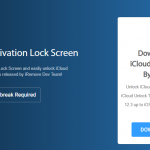Ad Hoc reporting has become very popular in recent times. It is a model of BI (Business Intelligence) which creates reports and distributes them to non-technical users. Ad Hoc Reporting Solution for .Net is just what every business needs. With Ad Hoc reporting tools, the technical user can set up the BI solution, connect with data sources, set up security parameters, and determine the objects that the end-users would be able to see. Then, business end-users can create actual reports.
So What Is Ad Hoc?
Ad Hoc is a Latin term that means as the occasion requires. It simply means that users can take advantage of this BI model for reporting and analysis regardless of the occasion. Thus, there is no need to request any queries from IT. When it comes to Ad Hoc reports, they can be as simple as one-page data tables or as rich and complicated as cross-tab or interactive tabular reports with visualization and drill-down features. The reports can even be presented in the form of heat maps, dashboards, and other advanced forms. When using Ad Hoc reporting tools, you need to consider the type of solution being used, the requirements of the end-user, and their confidence towards the solution.
What Is the Goal of Ad Hoc Reporting?
The main goal of Ad Hoc reporting is to empower end-users so that they can ask questions about company data without having to burden IT by asking them to create various reports for different purposes. Therefore, it makes sense to use Ad Hoc reporting tools where there are a huge number of end-users that want to see, understand, and take decisions based on the data.
For instance, an organization that has a large sales force can use Ad Hoc reporting tools. Each of the sales representatives will be able to set up a report for their territory to show their performance in terms of goals achieved, orders taken, and number of client visits in a format that can be understood. Besides, the numbers would be pulled out from the same source as the organization. Thus, it would minimize surprises and promote consistency.
So How Does Ad Hoc Reporting Features Work?
Ad Hoc reporting tools have a lot to offer. How does Ad Hoc Reporting Features work? Let’s find out. To get the most of Ad Hoc reporting features, the quality of the design plays a huge role. The features work as below.
- Identify the question.
- Keep the reports simple.
- Ensure an easy-to-understand layout.
- Make all the aggregate data points accessible.
- And maintain the consistency of the design.
Benefits of Ad Hoc Reporting Tools
There are plenty of benefits of using Ad Hoc reporting tools. They are mentioned below.
- Provide critical information at the right time to the right people.
- Offer flexibility in an ever-changing environment.
- Save time and training costs.
- Encourage information sharing and collaboration.
- Reduce the IT workload.
Conclusion
Ad Hoc reporting tools are crucial for taking your business to the next level. Give them a try. You will not regret it.






